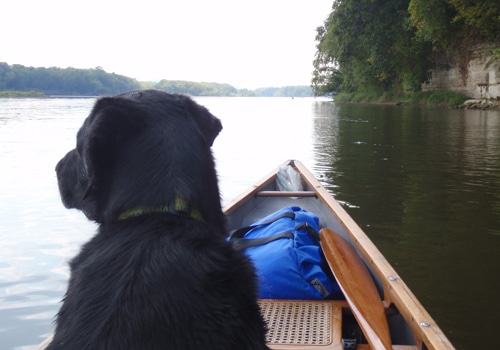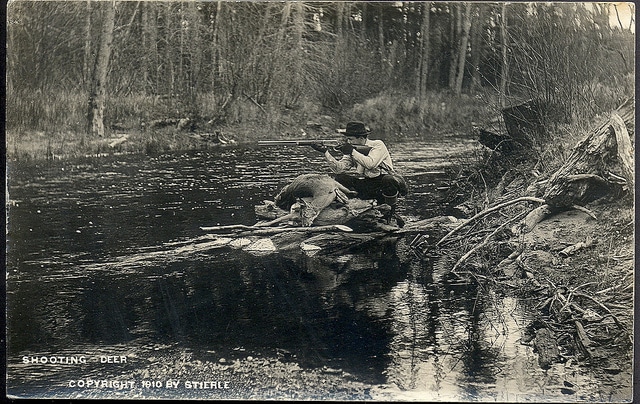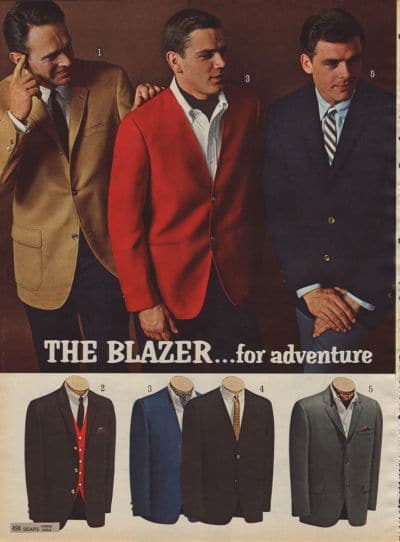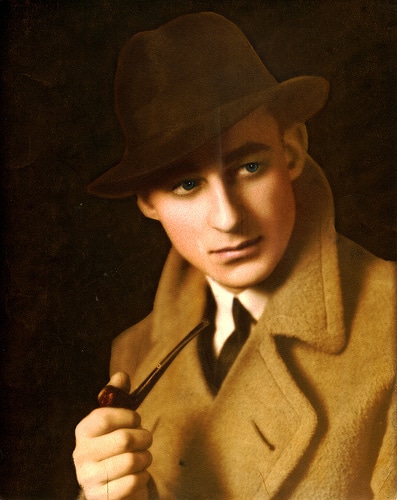
Editor’s note: This is a guest post from Jake Hall.
Hunting season is nigh upon us, and you may be thinking about getting a dog to aid in your pursuits. Dogs have a long history of playing the role of partner to the avid outdoorsman, so today I’d like to give you a primer on how to start hunting with dogs.
There is no doubt about the single most important animal to aid man in his pursuit of food: Canis familiaris (the domestic dog). Although some horse lovers out there may think our equine companions have assisted mankind for longer, the origin of the hunting dog dates back some 20,000 years, while the domestication of the horse did not occur until around 4,000 BCE. While modern man has lost sight of the concern for survival, and forgotten historic hunting skills and traditions, an ancient hunter’s life depended on his hunting success.
For millennia, men have relied upon dogs to hunt for food, shelter, and clothing. Around 9,000 years ago, during the domestication of livestock, the dog’s role shifted from that of strictly hunting, to herding and protecting, beginning man’s venture of selectively breeding his best friend to fit specific working needs. Since that time, the dog has always had a purpose. Over time, as fast-developing agriculture and industrialization diminished man’s focus on the harvesting of wild game for survival, reliance on the hunting dog also waned. Hunting became a pastime, often kept as merely a familial tradition, and substantially fewer dogs were used as working animals.
As important as man’s role as provider is to his family and his own well-being, a deeper understanding and connection to nature is crucial to his development and success as a hunter. Fostering relationships between man and beast can enlighten every hunter to his place in the circle of life and the significance of harvesting a living creature. Working dogs are not for everyone, and may not be for every hunter, but there are few things more gratifying to an outdoorsman as developing a channel of communication with an animal and experiencing it enjoy and strive to fulfill your needs.
Breeds and Methods
Excluding the guardian and herding breeds, hunting dogs are separated into three main categories: hounds, gun dogs, and terriers. Although many terrier breeds have been made into house pets, there are still some being bred as working dogs. There are several uses for these terrier breeds such as varmint hunting and blood tracking larger, wounded game, but many of these types of hunting have fallen out of favor in the US. Therefore we will focus on the more widely available and legal hunting methods using gun dogs and hounds. It is important to understand what makes these groups different, but in order to do so it is first necessary to understand wild game. The long and short of it is, in general, there are two types of game: those that run, and those that hide. Hounds are used to pursue running game and gun dogs are used to locate camouflaged, hiding game.
Scent Hounds

Crockett, a Mountain Cur, treeing a squirrel on a hunt in Mississippi.
The scent hound group is defined by its scenting ability and loud voice. Most breeds in this group have loud booming voices which they readily use while following a scent. Although this can be a nuisance in settled areas, such as condensed neighborhoods or apartments, it is a highly valuable trait for the hunter wishing to follow a dog during a hunt, even when the dog is out of sight. Endurance is key in order to stick to a track and follow it over long distances and rough terrain.
All of these breeds are similar in their pursuit of game but some are specifically bred to pressure an animal that seeks refuge in a tree, in which case the dog will remain at the base of the tree until the hunter arrives. These “tree hounds” are incredibly efficient at keeping game in a tree for the hunter to observe before harvesting. This can be an important asset when trying to discern the gender or legality of larger game. Squirrels, raccoons, bobcat, mountain lions, and bears are common game sought with tree hounds (such as Curs and Coonhounds). Other non-treeing game such as rabbits, foxes, coyotes, wild boar, and deer can be pursued with both tree hounds and running hounds (more information on breeds below).
Gun Dogs

Two German Shorthaired Pointers locating pheasants and performing their signature “point.”
Gun dogs are those breeds best suited for hunting upland and wetland game — primarily birds and occasionally furred game such as rabbits. This group is further separated into three subgroups known as: pointers, flushers, and retrievers. Now, hundreds of books have been written on the different gun dog breeds and their hunting methods, but the basic purpose is consistent amongst them all: to locate game within shooting distance of the hunter and then to retrieve the downed game. Unlike hounds that follow the foot scent left by running animals, these breeds excel at locating camouflaged birds by detecting scent in the air. This group hunts in a more patterned way to locate these hidden animals in much closer range to the hunter. Gun dogs are a great choice for those wishing to own a versatile hunting dog that can locate multiple species of birds and retrieve them directly to the hunter.
Choosing a Breed
The number one priority when choosing a hunting dog is deciding on the desired game. If pheasant or quail sound tastier than rabbit or squirrel, then right away a hunter can focus on the gun dog group instead of the hounds. The end goal is to put food on the table and it is the hunter’s responsibility to only harvest game he intends to utilize. It would be counterproductive to take a Coonhound that was bred to pursue game for miles while barking, and try to get it to silently locate birds within shotgun range. All dogs can be trained to be obedient in certain actions, but just as we have deeply rooted instincts in our manhood, so do animals in their approach to hunting. So, it is imperative to narrow down your desired game before refining your breed selection to a particular group.
Secondly, the desired hunting method will further narrow your breed selection to a subgroup. For upland hunting would you prefer a gun dog to locate birds and immediately force it to fly, or would you prefer him to locate the bird and wait for you to arrive and flush it? Spaniels excel at staying close to the hunter and flushing birds for immediate shooting. Pointers will range out further to locate game and stand still, “pointing” at game for the hunter to flush and shoot. For hounds you may prefer the dog to bark throughout the entire pursuit of your game, or you may prefer him to remain silent and only bark once the game is located. Coonhounds, and smaller hounds such as Beagles, Bassets, and Teckels, are all known for howling while following a track, while Curs are better known for remaining silent until the game is in sight.
Once a subgroup is selected, a specific breed is ready to be chosen. However, even though the criteria has been narrowed this far, a little more work needs to be done to acquire your perfect hunting companion. For example, if a pointing dog is desired, a new hunter may not understand the difference between a German Shorthaired Pointer and an English Pointer, or the difference between a Brittany and an English Setter. Their method of hunting may be the same, but breeds can differ in their energy level, versatility, desire to please, and hunting style. Researching bloodlines, contacting breeders, and seeing different breeds hunt firsthand will help in finding your perfect dog. Research is incredibly important and finding breeders who are breeding only quality working animals will require time, so be prepared to spend a few months locating breeders and hunting with their dogs before buying from their stock. In the end, the one trait all dogs have in common is their devotion to man for thousands of years.
Hounds
| Large Hounds | Small Hounds | Curs | ||
| Bluetick* | Beagle | Mountain* | ||
| Black and Tan* | Basset | Kemmer* | ||
| Treeing Walker* | Teckel | Blackmouth | ||
| Plott* | Catahoula | |||
| English* | ||||
| Redbone* | ||||
| American Leopard* | ||||
| Foxhound |
*Tree Hounds
With these breeds you can hunt: squirrel, rabbit, raccoon, wild boar, mountain lion, bear, fox, bobcat, and coyote.
Gun Dogs
| Pointers | Retrievers | Setters | Spaniels | |||
| English | Labrador | English | Springer | |||
| Brittany* | Golden | Gordon | Cocker | |||
| German Shorthaired* | Chesapeake Bay | Irish | Field | |||
| Deutsche Drahthaar* | Standard Poodle | |||||
| Wirehaired Pointing Griffon* | ||||||
| Pudelpointer* | ||||||
| Weimaraner | ||||||
| Munsterlander* |
*Versatile breed: better suited to hunt both birds and furred game, as well as retrieve waterfowl.
With these breeds you can hunt: quail, pheasant, partridge, duck, dove, goose, grouse, woodcock, and rabbit.
Getting Started
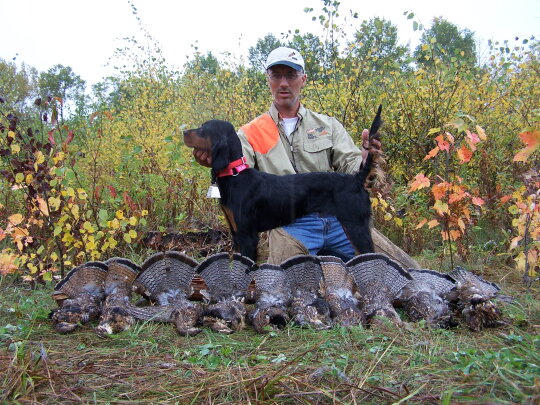
A Gordon Setter after a successful Ruffed Grouse hunt.
Those new to hunting (and even experienced hunters) may be intimidated at raising a working animal, but starting out is not as difficult as it seems. The most important thing when training a hunting dog is to choose a single training regimen and stick with it. There are dozens of philosophies out there for teaching obedience and hunting skills, but trying multiple techniques, especially as a beginning trainer, can confuse your dog. Dogs thrive on consistency, so finding a single philosophy and training method to practice will ultimately save a lot of time, and keep the dog confident in fulfilling your requirements.
Obedience and training are incredibly important to create a suitable hunting dog, but without exposure, a dog can never fully develop as a hunter. Young dogs must gain experience throughout the first two years of their life, and they must spend ample amounts of time actually hunting. You must be willing to spend multiple days a month in the field, as well as ensuring your protégée interacts with game as much as possible. Young dogs must learn to hunt in the wild, not a backyard. Running through briars, swimming across creeks and rivers, and being exposed to the harsh elements are all part of a day’s work in the life of a hunting dog, and it is the trainer’s responsibility to help the dog become bold throughout these lessons. So, in order to build a bold, experienced hunting dog, expect to spend at least an hour in the field, 2-3 days a week, during the first year of its life.
Raising a dog from a puppy requires a lot of time, energy, money, and patience, so another option for first-time owners is to buy a young, started dog. Many breeders and trainers will have 1-3-year-old dogs that have been trained in obedience and have had one or two hunting seasons of experience. Buying one of these dogs will require you to learn how they have been handled by their current trainers, and bonding will take a little longer than with a puppy, requiring you to work at building confidence and trust. These dogs are also much more expensive than a puppy, but all their initial training has been completed and you will be able to take the dogs hunting as soon as you get them.
There are many resources online for aspiring gun dog owners and houndsmen. Also, hunters with dogs are always willing to lend a helping hand to those who are new to handling working breeds. Forums such as gundogforum.com, sqdog.com, biggamehoundsmen.com, and many others are invaluable resources to new hunters or trainers. Getting involved with local American Kennel Club, United Kennel Club, or Versatile Hunting Dog Assoc. chapters is the best way to meet other dog owners, compete in field trials, and get training advice. State Wildlife Departments, Army Corps of Engineers, and land owners are all viable avenues for new hunters looking for tracts of publicly accessible land. When hunting with dogs, always check state hunting regulations on the legality of hunting certain game and if the use of dogs is allowed on public land.
Conclusion

Many great hunters throughout history are known to have used dogs. Theodore Roosevelt accompanied famous houndsmen Ben Lilly and Holt Collier on bear hunts in Louisiana using a pack of bear hounds. The Holt Collier hunts resulted in the creation of the “Teddy Bear,” and Ben Lilly’s rugged lifestyle left a lasting impression on TR himself.
Hunting has been a necessity of man since the dawn of our existence; we’ve relied on hunting to provide food, clothing, and tools for centuries in order to survive. A successful hunt could mean the difference between life and death, and generations of hunters have looked to their four-legged partners to ensure that chance at life. There are many successful hunters that rely completely on their own skills to hunt, but working with a hunting dog is a great way to combine your own skills with the advantages offered by a dog. Our ancestors better understood the balance of man and nature, and our ties to the earth. By working directly with a piece of nature, we can experience a more intense connection to the game we pursue, and increase our daily dose of manliness.


